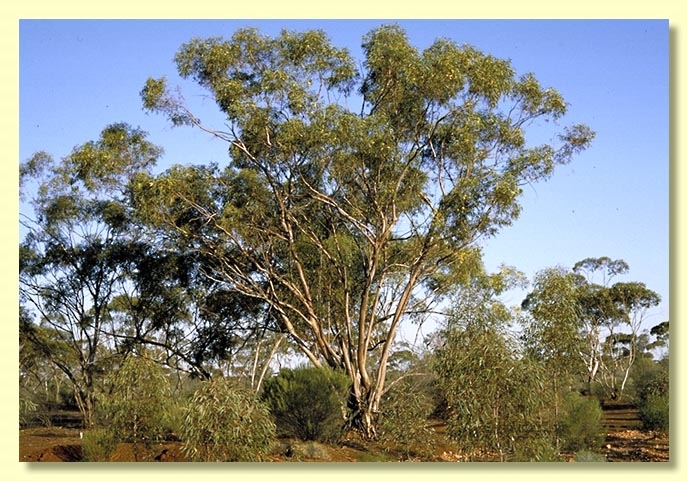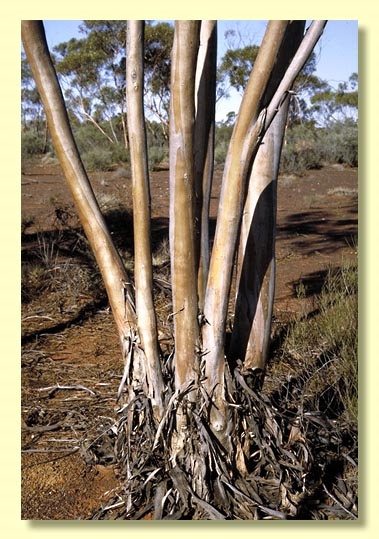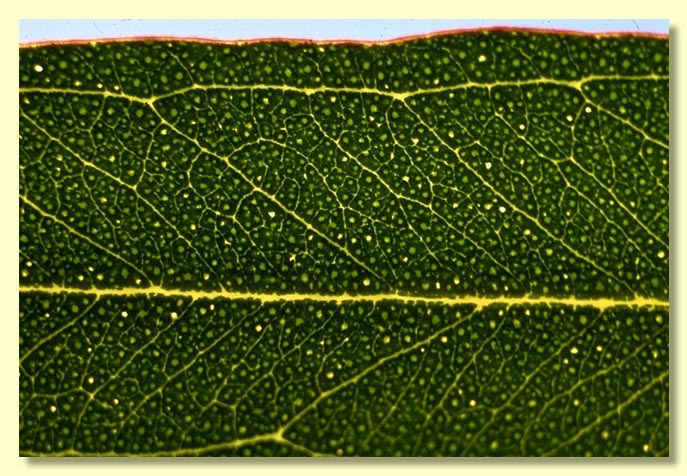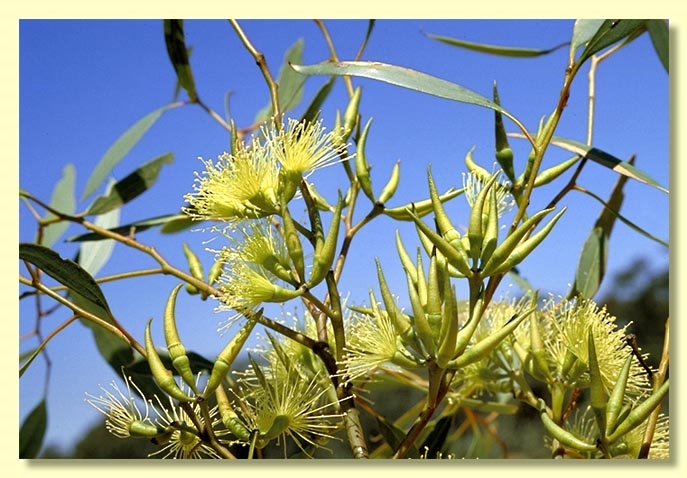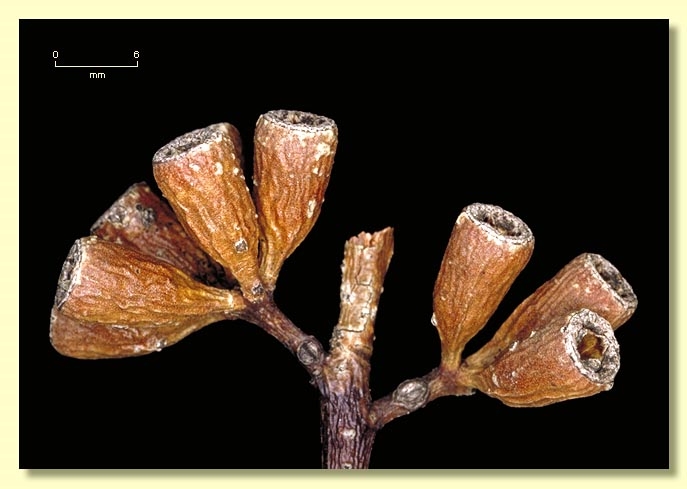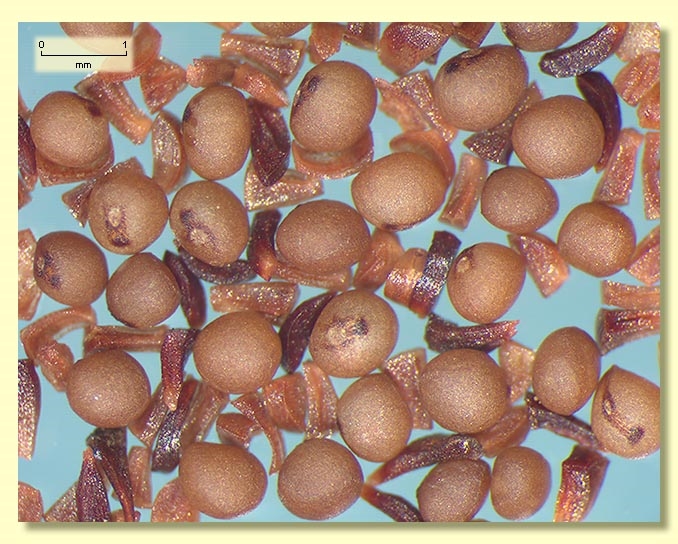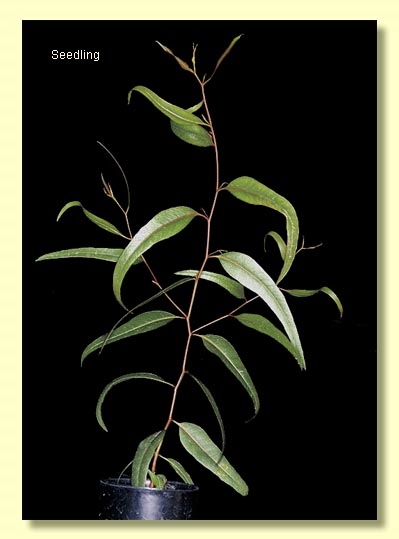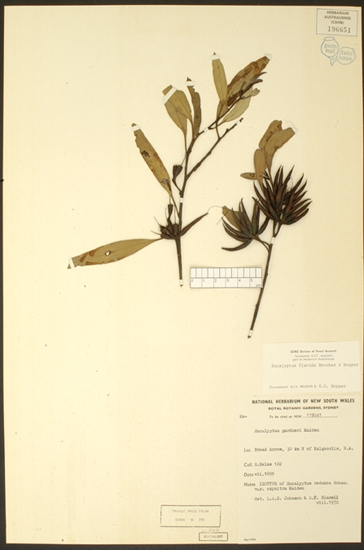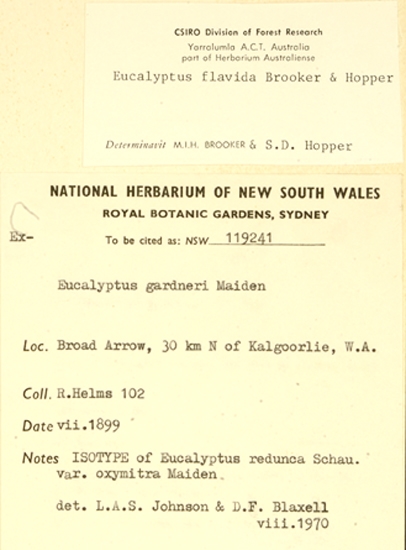Euclid - Online edition
Eucalyptus flavida
Eucalyptus | Symphyomyrtus | Bisectae | Glandulosae | Levispermae | Phaenophylla
Bark either rough for basal 1.5 m of trunks, coarsely flaky, black-brown, or entirely smooth, grey-green to bronze-grey and whitish grey.
Branchlets with a few pith oil glands (may need to inspect several branchlets).
Juvenile growth (coppice or field seedlings to 50 cm): not seen.
Adult leaves alternate, petioles 0.8–2.3 cm long; blade lanceolate, 6.5–11 cm long, 0.9–1.5 cm wide, base tapering to petiole, margin entire, apex pointed, concolorous, slightly glossy, light green, side-veins acute, reticulation moderate to dense, intramarginal vein remote from margin, oil glands island and intersectional.
Inflorescence axillary unbranched, peduncles widening apically, 1–2 cm long, buds 9 or 11 per umbel, pedicels 0.2–0.3 cm long. Mature buds elongated-fusiform (2.3–2.9 cm long, 0.3–0.5 cm wide), often curved, scar present, operculum conical, two to three times the length of the hypanthium and equal to it in width at the join, few outer stamens erect, most stamens variably deflexed, anthers oblong, versatile, dorsifixed, dehiscing by longitudinal slits, style long and straight, stigma more or less tapered, locules 3, the placentae each with 4 vertical rows of ovules. Flowers yellow.
Fruit pedicellate (pedicels 0.3–0.4 cm long), barrel-shaped to cylindrical, 1–1.1 cm long, 0.5–0.6 cm wide, disc descending vertically, valves 3, near rim level.
Seeds mid-brown to straw-coloured, 0.8–1.5 mm long, sub-spherical to almost cuboid, surface smooth, hilum ventral/terminal.
Cultivated seedlings (measured at ca node 10): cotyledons Y-shaped (bisected); stems rounded in cross-section, smooth or slightly warty; leaves always petiolate, opposite for 3 or 4 nodes then alternate, lanceolate, 7.5–13.5 cm long, 1.5–2.8 cm wide, glossy, mid-green.
Flowering has been recorded in November.
A tall mallee endemic to Western Australia, known from a few stands in the western part of the Great Victoria Desert south-east of Broad Arrow eastwards to Cundeelee. The bark is variable and may be completely smooth or with a rough basal stocking. The adult leaves are glossy green.
Eucalyptus flavida belongs to Eucalyptus subgenus Symphyomyrtus section Bisectae subsection Glandulosae because the cotyledons are bisected, buds have an operculum scar and the branchlets have oil glands in the pith. Within this subsection E. flavida is one of a group of species that form series Levispermae subseries Phaenophylla characterised by having smooth sub-spherical seed, a peduncle that widens apically, buds that are narrowly fusiform with some stamens erect and others variably deflexed, and glossy green adult leaves.
E. flavida is distinctive because of its long fusiform buds (to 3 cm long) with the operculum equal to the hypanthium in width at the join. The geographically and morphologically closest relative is E. histophylla, also from from the goldfields area but further to the south (Balladonia to Norseman and south-west of Coolgaride), and has similat buds. E. histophylla differs mostly its preference for granite substrate, the ribbony shed bark and adult leaves that are held erect in the crown. Both species have yellow flowers. Other species in series Levispermae found in the general area north and east of Kalgoorlie are E. capillosa subsp. capillosa and E. nigrifunda, both of which have dull greyish green to green adult leaves, glaucous branchlets and quite hairy-scabrid and glaucous juvenile growth.
Eucalyptus flavida is a handsome plant in cultivation with its large clusters of yellow flowers.

